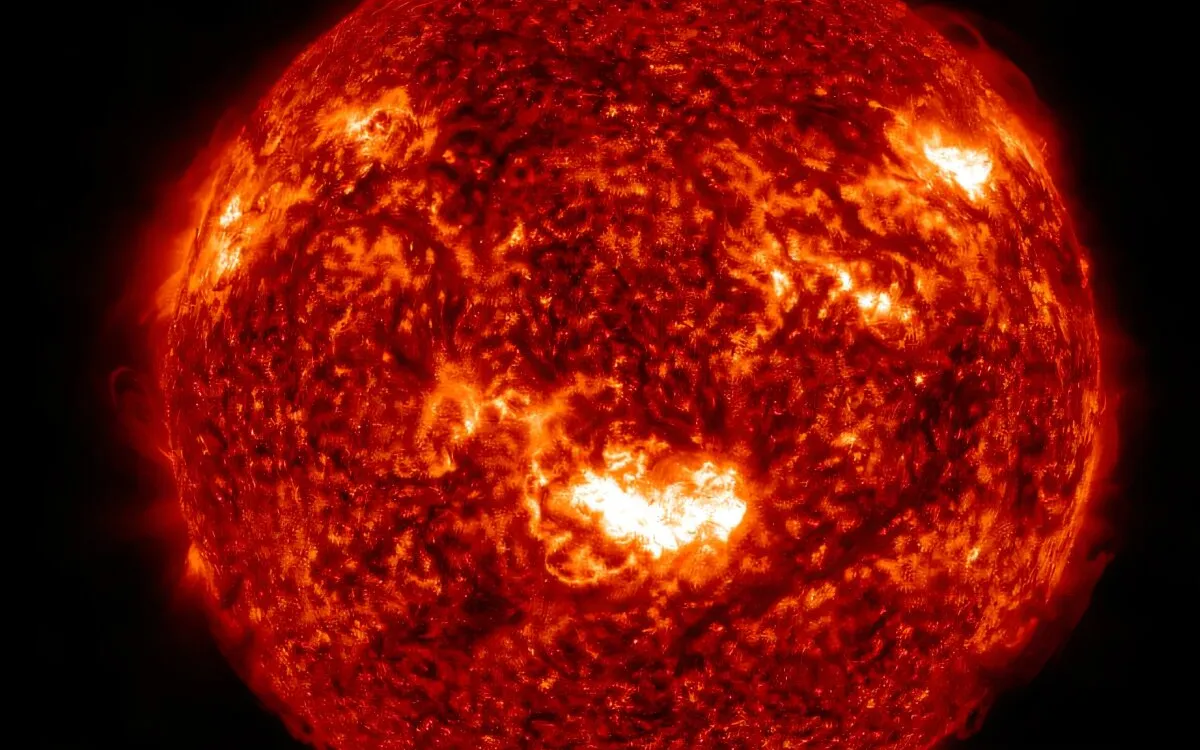
One year ago today, representatives from NASA and approximately 30 other U.S. government agencies convened for a landmark meeting focused on addressing a critical threat emanating from space. This threat was not an asteroid or extraterrestrial life, but rather our very own life-giving sun. The event, known as the inaugural Space Weather Tabletop Exercise, was designed as a training simulation where experts could evaluate the real-time implications of a geomagnetic storm, a phenomenon that disrupts Earth's magnetic field globally.
Driven by solar eruptions, geomagnetic storms pose serious risks, potentially decimating satellites, overloading electrical grids, and exposing astronauts to hazardous radiation. To minimize the impacts of such storms, effective coordination among various agencies is essential. This meeting served as an opportunity for participants to practice their response strategies. As Jamie Favors, director of NASA's Space Weather Program at NASA Headquarters in Washington, explained, the simulation aimed to identify existing process strengths and areas needing improvement. However, the planned hypothetical scenario was dramatically interrupted by a real-world event.
On May 10, 2024, the first G5 geomagnetic storm in over two decades struck Earth. Named the Gannon storm in honor of renowned space weather physicist Jennifer Gannon, this storm did not lead to catastrophic damages. Yet, a year later, the insights gained from the Gannon storm continue to enhance our understanding and preparedness for future geomagnetic storms.
The Gannon storm had far-reaching effects both on and off our planet. On land, high-voltage lines tripped, transformers overheated, and GPS-guided tractors in the Midwestern U.S. veered off-course, disrupting planting activities that were already delayed by heavy spring rains. While not all farms faced issues, those affected experienced an average loss of about $17,000 each, according to Terry Griffin, a professor of Agricultural Economics at Kansas State University. Although these losses weren't catastrophic, they represented a significant financial hit for farmers.
In the aviation sector, heightened radiation exposure, along with communication and navigation disruptions, forced trans-Atlantic flights to reroute. The storm also led to an unusual warming of Earth's upper atmospheric layer known as the thermosphere. Typically, at an altitude of 100 miles, the temperature peaks at around 1,200 degrees Fahrenheit; however, during the storm, it soared beyond 2,100 degrees Fahrenheit. NASA's GOLD (Global-scale Observations of the Limb and Disk) mission documented the atmosphere's expansion due to the heat, creating strong winds that lifted heavy nitrogen particles higher into the atmosphere.
In orbit, the expanded atmosphere generated increased drag on thousands of satellites. Notably, NASA's ICESat-2 lost altitude and entered safe mode, while the CIRBE (Colorado Inner Radiation Belt Experiment) CubeSat deorbited prematurely five months post-storm. Other missions, such as the European Space Agency's Sentinel, required additional power for orbit maintenance and maneuvering to avoid collision with space debris.
The storm also caused significant alterations in the ionosphere, a critical atmospheric layer. A dense region of the ionosphere, normally covering the equator at night, dipped toward the South Pole, creating a temporary gap near the equator. Additionally, the Gannon storm affected Earth's magnetosphere, the magnetic field enveloping our planet. Data from NASA missions like MMS (Magnetospheric Multiscale) and THEMIS-ARTEMIS revealed massive waves of particles and curled magnetic fields at the edges of the coronal mass ejections (CMEs). These waves were instrumental in releasing substantial magnetic energy and mass into the magnetosphere, resulting in the largest electrical current observed there in two decades.
The Gannon storm also sparked auroras around the globe, including in regions where these stunning light displays are typically rare. NASA's Aurorasaurus project received over 6,000 observer reports from more than 55 countries and all seven continents. Photographers contributed valuable insights into the unique magenta auroras observed in Japan, which researchers linked to a combination of red and blue auroras resulting from oxygen and nitrogen molecules raised higher than normal due to the storm's effects on the upper atmosphere. Co-author Josh Pettit of NASA's Goddard Space Flight Center remarked on the rare nature of this event, stating, "It typically needs some special circumstances, like we saw last May."
The sun's intensified solar activity did not stop at Earth; the active region responsible for the Gannon storm eventually turned away from our planet, directing its solar outbursts toward Mars. NASA's MAVEN (Mars Atmosphere and Volatile Evolution) orbiter observed auroras enveloping the Red Planet from May 14 to 20. During this period, energetic particles overwhelmed the star camera on NASA's 2001 Mars Odyssey orbiter, causing it to shut down for nearly an hour. On the Martian surface, images captured by the navigation cameras on NASA's Curiosity rover were speckled with snow-like streaks caused by charged particles, while Curiosity's Radiation Assessment Detector recorded the highest radiation surge since its landing in 2012, equivalent to a dose of 8,100 micrograys—comparable to 30 chest X-rays.
The Gannon storm has been recognized as the best-documented geomagnetic storm in history, spreading auroras to unusually low latitudes. A year after this significant event, we have only begun to explore its implications. The data collected during this extraordinary occurrence will be analyzed for years to come, offering new insights into the nature of geomagnetic storms and strategies for effectively managing their impacts.